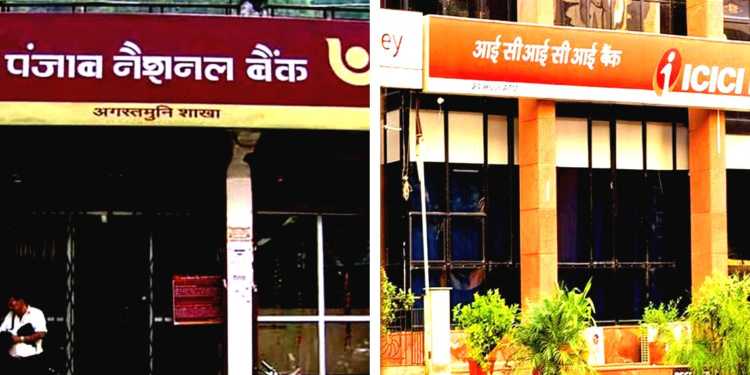After the Nirav Modi scam saw the light of the day, the demand for the privatization of banks has surfaced yet again. From ASSOCHAM (Associated Chambers of Commerce of India) to FICCI (Federation of Indian Chambers of Commerce and Industry), many have demanded that banks be privatized. At the same time, others like the banking unions and the chairperson of SBI herself, have slammed those who are demanding this privatization. I’m a public-sector banker by profession, and I will try to keep the article as unbiased as possible.
The demand for the privatization of banks is not a new one. It has been raging from the time of the nationalization of banks in 1969.
It is no wonder then that some industrialists have advocated for their privatization, as they have consistently underperformed and run losses. The finance minister though, has ruled out such a possibility. People feel that their hard-earned tax money is being wasted by pumping capital into failed public sector banks. However, as always, statistics will only tell you one part of the story. We need to see the intricate details to understand the complete picture.
Though any business entity should earn sufficient returns on the capital employed to keep itself floating, the idea of creating public sector banks was of a completely different nature. Fourteen banks, which were private, were nationalized in 1969 with the intention expanding banking services from the tier I cities to the remotest villages of the country. And, after almost 50 years of nationalization, we have brought a majority of the country’s population under the formal banking channel. This is a huge achievement. To put it in perspective, currently there is a bank branch for every 10,000 people. In 1969, one branch served a whopping 65,000 people. These banks had around ₹5000 crores of deposits and ₹3700 crores of advances in 1969, whereas now, they have a mammoth ₹106 trillion of deposits and ₹79 trillion of advances. That’s humongous growth. The purpose of nationalizing these banks is being largely served.
Can public sectors banks compete with private sector and make huge profits like them? No, highly unlikely. PSBs are mandated to carry dead weight along with them in the form of government initiatives. It is on their shoulders to carry the initiatives of the central government. To give you a better idea, can you name one major scheme which was introduced in the last four years, and which doesn’t involve any Public-Sector Bank? Whether it is the PMJDY (Pradhan Mantri Jan Dhan Yojana), the PMJBY (Pradhan Mantri Jeevan Jyoti Beema Yojana) , the PMSBY (Pradhan Mantri Suraksha Beema Yojana), the APY (Atal Pension Yojana), the PMAY (Pradhan Mantri Aavaas Yojana) or any other scheme, banks have played an important role in their success. Banks had to set aside part of their resources (be it man power or technology) to make these schemes successful. Apart from the PMJDY, none of the other schemes can even be considered core banking activities. Resources are limited and it’s always a trade-off between which work to prioritize. If the bank assigns an employee to a non-banking government scheme, his bank-related work suffers. This is the root cause of the problem.
Public sector banks have become commission agents. Bankers spend their time doing work that is unrelated to banking. Monitoring loan portfolios and following up with the borrowers, which is essentially their work, often gets ignored. When cracks started to appear, instead of addressing them at the initial stage the banks conveniently brushed them under the carpet. By the time they reemerged, it was too late.
Coming to the question of the hour, does privatization help in saving the banking industry? Well, maybe. But before I answer that, you need to understand how private sector banks are performing. Net profits are not everything. Ask Lehman Brothers if you have any doubts about this. In 1995, one rogue trader singlehandedly brought down the two centuries old Barings. Gross NPAs in India’s largest bank, SBI, stand over 10%. It is an open secret that politicians and policy makers have yielded undue influence in the decision-making process of public sector banks. Managerial incompetence is another factor people cite for the underperformance of public sector banks. On the contrary, ICICI which is the second largest lender, has gross NPAs of just below 8%. There is only a difference of two percentage points between both banks, and mind you, managerial incompetence and political influence do not seem to have been for ICICI’s performance.
Moreover, ICICI has witnessed the highest number of frauds during the April to December 2016 period, followed by SBI, Standard Chartered, HDFC, Axis, Bank of Baroda and Citi. Four out of these six are private banks, and when we compare them in terms of size, private sector banks have knocked public sector banks out of the ring.
So once again, does privatization help? I must admit it does. I’m a capitalist at heart, I always welcome competition. Privatization helps in building better infrastructure, skilled employees and most importantly less government interference in the decision making. But, should any government privatize banks? A big and definite no. In India, public sector banks are dutiful followers of the government and will do anything to impress their masters. They have declared dividends when government was running in fiscal deficit, they worked their bottoms off during demonetization and they meticulously implemented every scheme. Who would want to let go of such an able executor? I wouldn’t.































